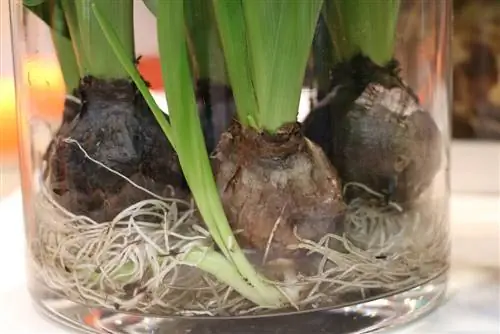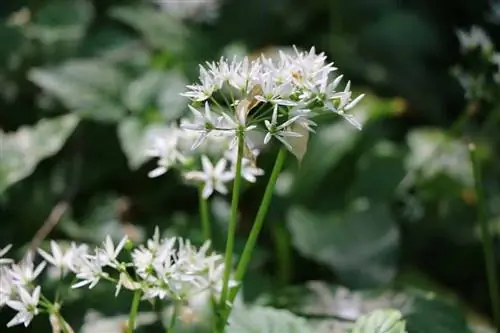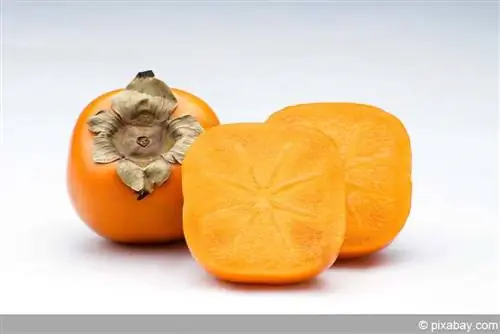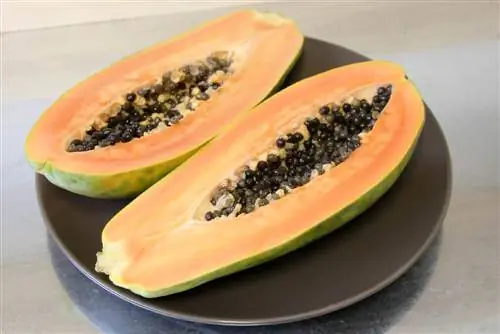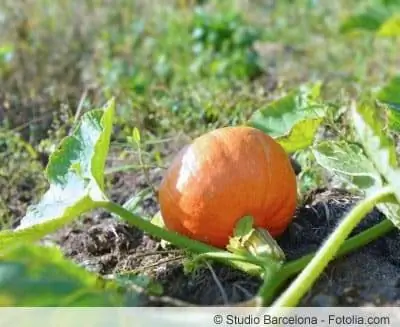- Author admin [email protected].
- Public 2023-12-17 03:39.
- Last modified 2025-01-24 12:45.
The beauty of onion plants is often short-lived, but it is all the more magnificent. Winter aconite, daffodil or tulip, from bright white to several bright tones in the same flower - the variety of species and cultivars is almost as great as their blooms. However, laypeople often face a problem if they want to propagate particularly beautiful specimens or simply increase the number of flower bulbs. Sow seeds or divide bulbs? Interested hobby gardeners can find out how to do it here.
Growing onions
The easiest way to propagate onion plants is to take brood onions. Over time, these form naturally on the flower bulbs or between the leaves, although this process can be accelerated even further. In the second year of growth and flowering at the earliest, the open flower heads are cut off as quickly as possible to prepare the bulb plants. The rest of the flower stalk and leaves remain standing. The reason for this is the growth-increasing stimulus that the plant receives by removing the flower. The green, on the other hand, is used for photosynthesis, which creates storable energy. As a result, the onion grows faster and stronger. This also stimulates the formation of breeding bulbs. The early performance can and should be repeated the following year. The bulbs are then dug up after flowering and when the leaves have already withered. Smaller roots - the breeding bulbs - should now appear on the large flower bulbs. These are handled as follows:
- The onions are carefully broken off or cut off with a sharp and clean knife, depending on their size and whether they have already been separated from the large onions.
- The roots should remain as intact as possible.
- Any interfaces or wet breaks are treated with a fungicide to prevent damage and infection.
- The small flower bulbs are then inserted separately into the appropriate substrate and watered. It is important to ensure that the depth is appropriate. For tulips it should be around ten to fifteen centimeters, while hyacinths should be slightly visible above the ground.
- If the onion plants show flowers the following year, they can be cut off again to make the onions grow faster.
If the onion plants have been in the same location for several years, the preparation described is unnecessary. The onions can then simply be carefully dug up in summer or early autumn, the seed bulbs removed and planted directly.
Tip:
So that you don't have to miss out on the flowers, but still encourage the proliferation of bulbous plants, not all flowers should be removed at the same time. It is enough to carry out the measure on every second or third plant.
Division
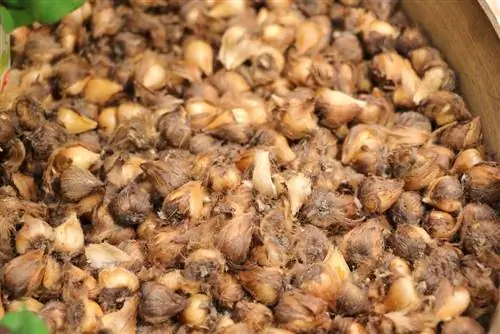
Another way to propagate flower bulbs is division. Many bulbous plants, such as the tulip, form clumps over time. This looks nice at first. Over time, however, the flowering power decreases significantly and the clumps show almost exclusively leaves. For this reason alone, it makes sense to dig them up every four to six years and carefully separate the bulbs from each other. The flower bulbs can be planted separately in small groups. This usually also results in brood onions. In addition to propagation, this measure also has a rejuvenating and flowering effect. The direct division of onion plants does not just mean the division of clumps. The onion itself can also be halved or scaled and propagated this way. To do this, you must first differentiate between the different types of onions. This is how you find the usual peeled onions, for example those known from kitchen onions. Likewise, scale bulbs, which serve as a basis for some types of lilies, including Lilium wallichianum or Lilium martagon.
Dividing the peel onion
The following instructions help when propagating the shell onion by direct division:
- The bulbs are dug up and the soil is thoroughly removed.
- To prevent infections or other damage, the flower bulbs are also rinsed with water and the outer shell is removed.
- The onion cake is looked for at the plant onion. This is a flat disc that is usually found at the bottom.
- Using a sharp, clean knife, cut the onion lengthwise so that the onion cake is halved.
- Both cut surfaces are dusted with a fungicide and allowed to dry slightly.
- Only when the cut surface no longer appears moist can the resulting halves be planted back into the substrate.
Division of the scale onion
Although the scale onion is also a flower bulb, its propagation by division is completely different and requires a little more sensitivity.
- The scale onion is also dug up, removed from the soil and peel and washed.
- The small tubers consist of individual scales that are lens-shaped and slightly curved.
- These scales are now separated from each other all around, from the outside to the inside. Under no circumstances should you cut, but only work with light pressure and your fingers.
- The individual scales are treated with fungicide if there are small impressions or injuries.
- Afterwards, each scale is placed upright in substrate and lightly covered. Of course, don't forget to water either.
Seeds
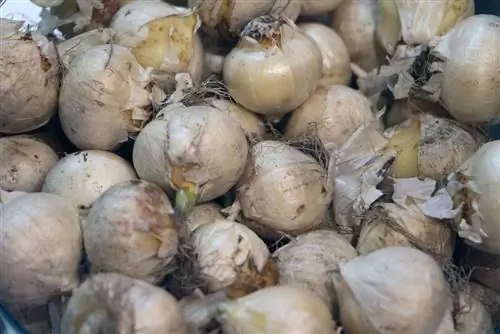
It is entirely possible to propagate flower bulbs by seeds. However, it can take several years for the seeds to become flowering onion plants. In addition, collecting seeds is often difficult. This variant of propagation is therefore only recommended to a limited extent.
If you still want to try it, you should proceed as follows:
- When the flowers wither, they sow the seeds they contain. In order not to have to collect the tiny seeds individually later, small bags or sacks should be tied around the flowers.
- The seeds obtained in this way are first air dried. Depending on the weather, this process can take several weeks.
- The now dried seeds are either kept dry and cool until next spring or sown directly.
- The seeds are sown directly in the bed and lightly covered with finely sifted soil or sown in planters and growing soil.
- In the first few weeks, the seeds are kept slightly moist and should be kept bright but not too warm. About 20° is enough.
Conclusion
The propagation of onion plants is not difficult in itself, but it definitely requires some patience and effort. Whether division or seeds - the flowering usually has to be avoided at first. However, the measures have a rejuvenating effect. It is therefore advisable to start propagation in good time and stagger it so that there are always enough flowers.

